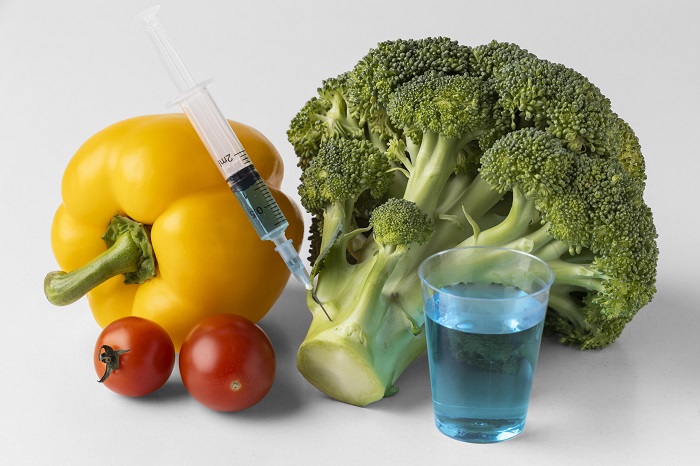The vivid colors of fruits, vegetables, and flowers are not just visually appealing but also an indicator of the rich array of natural compounds present in these sources. Among these compounds, anthocyanins, responsible for the vibrant red, purple, and blue hues in various foods, have gained significant attention in recent years. They are not just visually captivating but also possess numerous health benefits. In this blog, we will explore the world of anthocyanin food coloring, from its origins and uses to its potential health advantages and the role it plays in the culinary world.
What are Anthocyanins?
Anthocyanins belong to a class of natural pigments known as flavonoids. They are primarily found in plants, including fruits, vegetables, and flowers. The term “anthocyanin” is derived from the Greek words “anthos” (flower) and “kyaneos” (dark blue), reflecting their distinctive color range.
The Spectrum of Colors
Anthocyanins are responsible for a captivating spectrum of colors, including:
- Red: Found in strawberries, cherries, and red cabbage.
- Purple: Grapes, blueberries, and eggplants are renowned for their purple hues.
- Blue: Certain blue flowers and butterfly pea tea are famous for their natural blue coloring.
The Culinary Applications of Anthocyanin Food Coloring
Anthocyanin food coloring is a versatile ingredient used to add a burst of color and a touch of elegance to a wide range of culinary creations:
- Baking: From vibrant red velvet cakes to blueberry muffins, anthocyanin food coloring enhances the visual appeal of baked goods.
- Beverages: Natural blue and purple coloring agents are used to create visually enticing drinks, like butterfly pea tea or blueberry-infused beverages.
- Confectionery: Candies, gummies, and jellies often rely on anthocyanin-rich fruit extracts to achieve their colorful appearance.
- Sauces and Desserts: Natural anthocyanin food coloring can be used in savory dishes and desserts, including sauces, ice creams, and sorbets.
Health Benefits of Anthocyanins
The allure of anthocyanins goes beyond their captivating colors; they also offer a host of health benefits:
- Antioxidant Properties: Anthocyanins are potent antioxidants, helping to combat oxidative stress and reduce the risk of chronic diseases.
- Anti-Inflammatory Effects: They have anti-inflammatory properties that can help alleviate inflammation in the body, potentially reducing the risk of chronic diseases.
- Heart Health: Consumption of anthocyanin-rich foods has been linked to improved heart health, as they may help lower blood pressure and reduce the risk of heart disease.
- Cognitive Health: Some studies suggest that anthocyanins may have a positive impact on cognitive function and memory.
- Eye Health: Anthocyanins may support eye health and reduce the risk of age-related vision issues.
- Cancer Prevention: While more research is needed, some studies have shown that anthocyanins may have a protective effect against certain types of cancer.
Natural Sources of Anthocyanins
Anthocyanins are widely distributed in nature and can be found in numerous food sources:
- Berries: Blueberries, strawberries, blackberries, and raspberries are abundant in anthocyanins.
- Cherries: Both sweet and tart cherries are rich in these natural pigments.
- Grapes: The skins of red, purple, and black grapes are abundant sources of anthocyanins.
- Purple Sweet Potatoes: The deep purple hue of these sweet potatoes is indicative of their high anthocyanin content.
- Red Cabbage: The vibrant color of red cabbage results from its anthocyanin content.
The Role of Anthocyanins in Nutrition and Well-Being
Anthocyanins play a crucial role in promoting good health and well-being. Their presence in various foods and beverages encourages consumers to make nutritious choices while enjoying a burst of natural colors. Additionally, their antioxidant properties offer a shield against the harmful effects of free radicals in the body, potentially reducing the risk of chronic diseases and supporting overall health.
Anthocyanins and Clean Eating
The global trend toward clean eating and wholesome food choices aligns seamlessly with anthocyanin-rich foods. Clean eating emphasizes whole, unprocessed foods, which are often the primary sources of anthocyanins. By incorporating these foods into their diets, individuals can enjoy the dual benefits of visually appealing, naturally colored dishes and improved nutrition.
The Future of Anthocyanin Food Coloring
As consumer demand for clean-label and natural products continues to grow, the future of anthocyanin food coloring appears bright. Manufacturers and chefs are increasingly exploring the use of natural colorants to meet these demands while maintaining the vibrant hues that make food visually enticing. Anthocyanin-rich sources are likely to play an essential role in this movement, offering a sustainable, health-conscious, and visually captivating option for enhancing the colors of our culinary creations.
Conclusion: A Feast for the Senses and Health
Anthocyanin food coloring brings not only a burst of vibrant colors but also a multitude of health benefits to the culinary world. From their antioxidant properties to their role in reducing the risk of chronic diseases, anthocyanins offer a unique combination of visual appeal and nutrition. As the world embraces clean eating and looks for natural, clean-label alternatives, anthocyanin food coloring takes center stage, adding a touch of magic to our plates and a boost to our well-being.
Image by Freepik





No Comment! Be the first one.